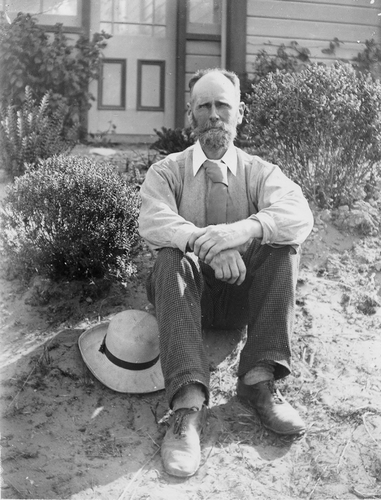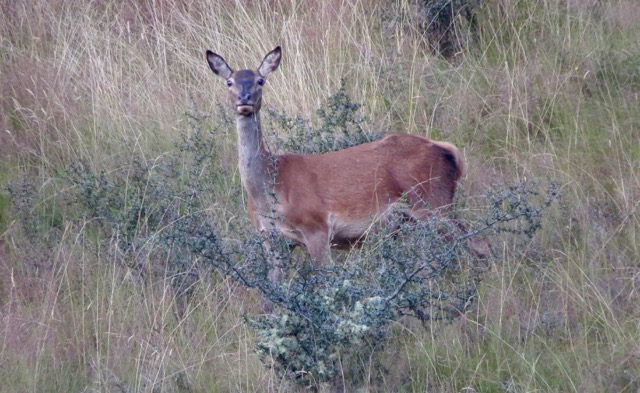Opinion by Tony Orman
In 1958 an American professor of zoology visited New Zealand. Dr William Graf from San Jose university in California came to study the wild deer situation on behalf of Hawaiian Board of Agriculture which was considering introducing deer as a game animal just as European settlers migrating to New Zealand had done in the late 19th century. Reports of deer having reached “pest” proportions in New Zealand had filtered back to Hawaii.
Dr Graf toured the country hosted by departments Forest Service and Internal Affairs. The eminent American scientist then compiled his report in which he wrote that there existed in New Zealand “an anti-exotic wild animal phobia to an extent that much of the public as well as many government officials do not and cannot view the situation in an objective perspective.”
He concluded “the oft repeated and widely believed statement about ‘vegetation which develops in the absence of grazing and browsing animals’ simply does not stand up under close scrutiny.”
He was alluding to the fact that New Zealand’s vegetation had evolved over many millions of years from browsing by some dozen or so moas that ranged from the giant lowland species to the smaller alpine-dwelling one and other birds such as the kakapo, takahe, kokaho and pigeon (kereru).
Moas had been exterminated by Maori hunting and destruction of their habitat by man-induced fires. The several species of deer and North American elk and moose and even possum, liberated by early European settlers once established simply re-introduced the browsing element to the vegetated ecosystem.
World renowned New Zealand scientist-ecologist the late Dr Graeme Caughley, summed it up when he described New Zealand’s as having three browsing regimes in the last 1000 years:-
- The period of moa and other bird browsing up to 1400 AD
- The period 1400 to 1850 with no browsing
- 1850 to the present day with the introduction of browsing animals ranging from deer to possums.
He described the pre-1400 AD period and 1850 to today periods as “closer ecologically” than the intermediate period (1400-1850).

<c> Leonard Cockayne – “hated deer with a passion but turned a blind eye to the browsing by moa.”
The moa species in the new British colony attracted immense world-wide interest in the late 19th and early 20th centuries. Obviously the birds browsed the bush and grasslands both alpine and lowland but that was forgotten at the 1930 Deer Menace Conference master-minded by an amateur botanist Leonard Cockayne. Cockayne had eased his way to a position of considerable influence within the corridors of government.
He hated deer with a passion but turned a blind eye to the browsing by moa that probably numbered several million according to scientific opinion such as Dr Caughley.
So was born the “pest phobia.” Departments employed deer cullers who were in essence deer killers. It was without scientific foundation or even commonsense and logic.

<c> Moa with several sub-species, heavily browsed vegetation
and were preyed upon by the giant Haast Eagle
To try to maintain the health of the “forest” that had evolved over million of years of browsing, it is important to apply browse pressure to the browse tolerant broad-leaf trees and undergrowth. In the absence of moas and kokaho and other pre-European browsers, it now is only the deer, chamois, tahr that can do this.
The possum is another browser with a role to play in the ecosystem. But it is difficult to undo some forty years of demonization and eco-hate. Possum occupy a similar ecological niche that the kakapo did in pre-human forests. To the trees of the forest it is of little consequence whether is the beak of a moa and kakapo of the teeth of a possum or deer that browses.
The impact of herbivore deer is less than the impact of herbivore birds. In the absence of large flightless browsing birds, deer are the best available alternative. The best course for New Zealand is to allow Nature to come to its own adjustments. Where once there may have been the sonorous boom of the moa there will now be the roar of the stag.
Certainly restoring natural food chains is far, far preferable to wasting millions of public monies annually to saturate forests and public lands with ecosystem poisons as 1080 and brodifacoum are. Toxins such as those two, leave forests with the silence of death and wastefully fly in the face of ecological reality.
Footnote: Tony Orman is a Marlborough-based conservationist and outdoor sportsman for over seven decade. He was active in the “Save Manapouri” campaign in 1970 and subsequent outdoor sporting battles such as opposing trout farming. As an author he has had some 24 books published

<c> Deer’s browsing habits are not unlike moa. photo Tony Orman

There is indeed something odd about this cultural NZ “phobia” of introduced species.
“New Zealand is part of a mostly submerged continent that broke away from the Gondwana supercontinent 85 million years ago. As the new land moved into the Pacific Ocean, it gradually submerged, then was uplifted by activity in the earth’s crust.”
These Islands we live on rose up out of the ocean. I doubt that there were any “native species” living on them when that happened.
“About 2.6 million years ago, a little before the start of the Quaternary period, earth plunged into cycles of repeated climate cooling known as ice ages. During glacial periods, average temperatures dropped by as much as 4.5°C, and lots of heavy snow fell on New Zealand’s high mountains. The steadily accumulating snow hardened into ice, forming huge glaciers that moved downhill into lower regions.”
Talk about climate change. In this ice ages period any species that had managed to come and establish themselves here must have definitely struggled to survive.
About 26,500 years ago, the Taupo eruption covered most of the country with volcanic ash.
“The Oruanui eruption of the Taupō Volcano was the world’s largest known eruption in the past 70,000 years, with a Volcanic Explosivity Index of 8. It occurred around 25,600 years ago[1] and generated approximately 430 km3 (100 cu mi) of pyroclastic fall deposits, 320 km3 (77 cu mi) of pyroclastic density current (PDC) deposits (mostly ignimbrite) and 420 km3 (100 cu mi) of primary intracaldera material, equivalent to 530 km3 (130 cu mi) of magma.[7][8][9]
Modern Lake Taupō partly fills the caldera generated during this eruption.
Tephra from the eruption covered much of the central North Island with ignimbrite up to 200 m (660 ft) deep. Most of New Zealand was affected by ashfall, with even an 18 cm (7.1 in) ash layer left on the Chatham Islands, ”
That must have gotten rid of many “native species” as well.
Common sense indicates that, by some means or other, any species that are currently living here must have come from elsewhere.
Our species eventually came here as well and started to modify the environment as we do.
It is undeniable that human habitat destruction, modification and “re-allocation” is the major cause of ecological disruption and the extinction 0f species but we prefer to think otherwise.
Factually, there is no such thing as a native or “indigenous” NZ species.
Everything that lives here must have originated somewhere else.
Locomotion is the primary survival attribute of living things.
They have to move from place to place to survive.
There always have and always will.
How and when the various species got here does not matter.
They are all “foreigners”.
The fact is that they are here and natural processes of adaptation and natural selection will enable the ecosystem to restore a harmonious balance IF WE ALLOW IT TO HAPPEN.
The natural trend everywhere is toward more Biodiversity (which actually means more different species in an ecosystem) rather that less because living things move from one place to another.
This phobia and prejudice toward “introduced species” is irrational and absurd especially since it does not seem to apply to our species and the others that we have domesticated for our economic benefit.
What ought to be more concerning are the ways in which we keep on polluting, modifying, re-allocating and destroying natural habitats to economically exploit the natural resources they contain.
NZ is no exception to the rules that nature has established and follows and we ought to appreciate and enjoy the NATURAL BIODIVERSITY that exists rather then fearing and trying to eradicate all species that we perceive as “pests”.
If our ambition to eradicate these “pests” could be realized (which is most unlikely) what would remain?
Some areas of dense and impenetrable bush with a few species of birds that could hardly be found or seen. Pretty dull and boring.
It might be much better to limit the number of people we agree to have living here with us since it is our species that seems to be the main ecological problem.
It’s not just an illogical pest phobia – it is an increasingly ecologically dangerous one.
Our planet is in the grip of an increasingly out-of-control species – humans.
The cliche is – we simply must change our evil ways, before it’s too late.
Even though it may already be too late – that should not stop us from trying.
It took a couple of hundred thousand years for the human population to reach 1 billion – just over a couple of hundred years ago, in around 1804.
It took a further 120-odd years to reach 2 billion, around 1927 – but then only 33 years to reach three billion in 1960. Thereafter, the global population reached four billion in 1974 (14 years), five billion in 1987 (13 years), six billion in 1999 (12 years) and seven billion by the end of 2011 (12 years). We’ll hit eight billion by the middle of this decade – nine billion in the decade or so after that – and be pushing 11 billion by the end of this century.
Even now, 93% of the mammalian biomass on the planet is either human – or the animals we farm, to feed ourselves. There’s been a 60% loss of wildlife since 1970 – and a 75% reduction in insect biomass in the last 30-odd years.
Humanity is – in dramatically quick fashion – pushing most other species off our planet.
The primary means by which we are doing this is habitat loss – and the use of pesticides and insecticides.
Major pandemics – Mother Nature’s way of effecting population control on excessive populations – are no longer effective at curbing our rampant population.
Humanity undoubtedly represents the greatest of evil in the history of our planet – for all of it’s wildlife.
The people who are arbitrarily pushing New Zealand’s “pest phobia” – represent the pinnacle of this evil. For they do it through discretionary choice.
What little wildlife we have left has become precious – in whatever shape or form it manages to continue to cling on to the surface of our planet.
Wiping out wildlife species in New Zealand – whether they be indigenous or introduced – to whimsically re-establish the ecological void that has existed since the Māori wiped out the Moa, around 1400 A.D. – is environmentally and ecologically irresponsible.
We’ve long since passed the point where trying to “wind back the clock” is the best viable option.
We can just hope that New Zealand’s purveyors of poison somehow fall victim to their own dastardly plan – before it’s too late, for the rest of our modern wildlife scenario.
Humans will be the masters of their own demise but nature will prevail.